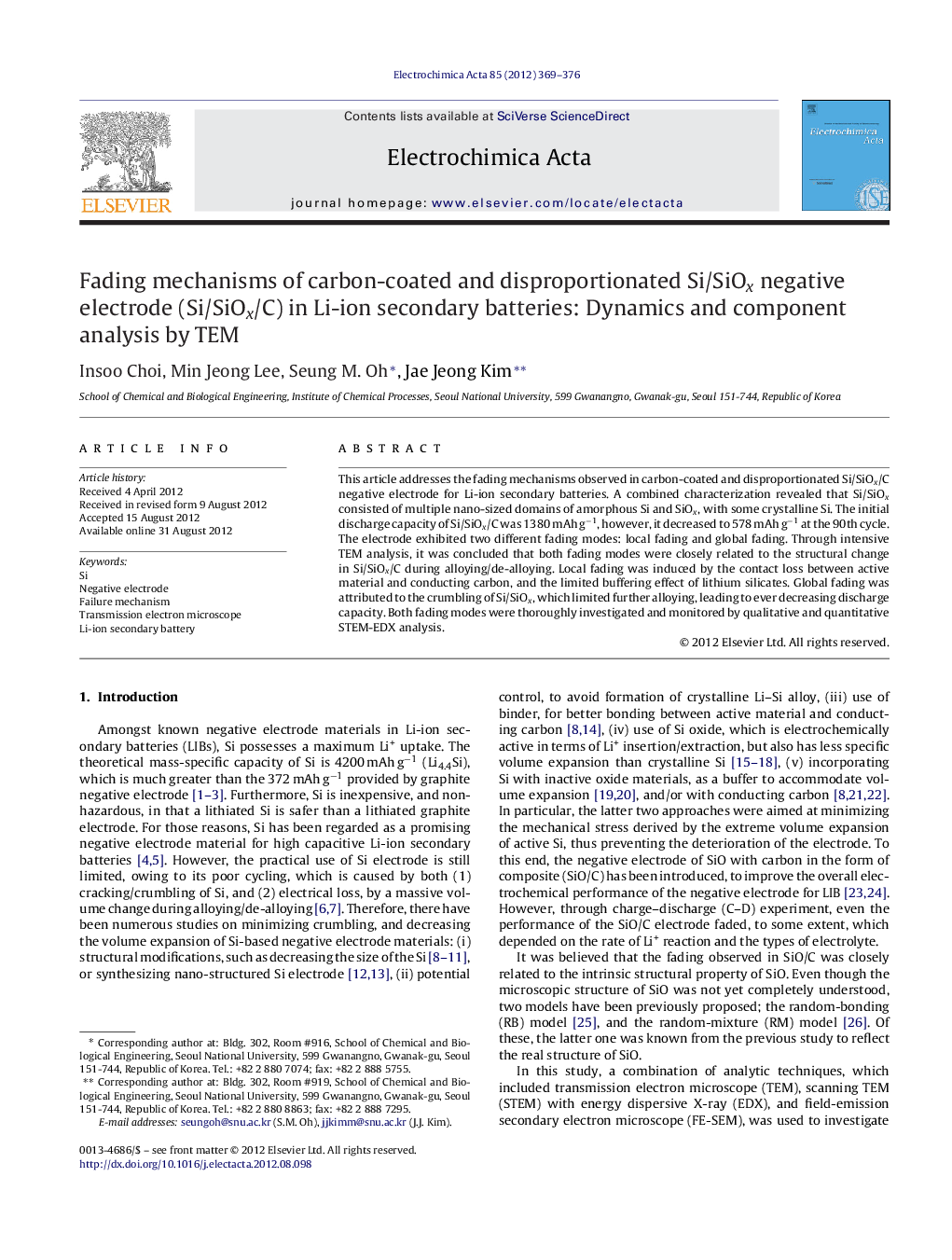| Article ID | Journal | Published Year | Pages | File Type |
|---|---|---|---|---|
| 187816 | Electrochimica Acta | 2012 | 8 Pages |
This article addresses the fading mechanisms observed in carbon-coated and disproportionated Si/SiOx/C negative electrode for Li-ion secondary batteries. A combined characterization revealed that Si/SiOx consisted of multiple nano-sized domains of amorphous Si and SiOx, with some crystalline Si. The initial discharge capacity of Si/SiOx/C was 1380 mAh g−1, however, it decreased to 578 mAh g−1 at the 90th cycle. The electrode exhibited two different fading modes: local fading and global fading. Through intensive TEM analysis, it was concluded that both fading modes were closely related to the structural change in Si/SiOx/C during alloying/de-alloying. Local fading was induced by the contact loss between active material and conducting carbon, and the limited buffering effect of lithium silicates. Global fading was attributed to the crumbling of Si/SiOx, which limited further alloying, leading to ever decreasing discharge capacity. Both fading modes were thoroughly investigated and monitored by qualitative and quantitative STEM-EDX analysis.
Graphical abstractFigure optionsDownload full-size imageDownload as PowerPoint slideHighlights► Fading mechanism in Si/SiOx/C was investigated with a macroscopic technique. ► STEM-EDX enabled qualitative and quantitative analysis of the electrode. ► Local fading was induced by contact loss of active material with conducting carbon. ► The limited buffering role of lithium silicates caused a hump behavior. ► Global fading was attributed to a crumbling of Si/SiOx during alloying/de-alloying.
